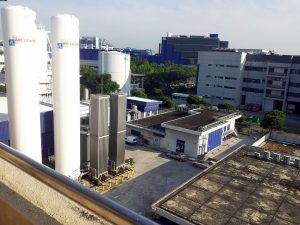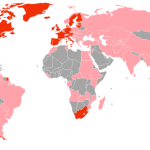Manufacturing and technology sectors to thrive post pandemic
- Industrial sector to benefit from manufacturing rebound post-COVID-19 despite a near term contraction.
- Technology sector expected to be the fastest-growing sector over the next three years, driving office demand.
- Hospitality sector has been the most volatile historically and could see potential strong rebound in tourism after COVID-19 as long term growth drivers in Singapore remain resilient.
- Manufacturing ranks top in overall resilience and rebound ranking, on strongest GDP rebound, as well as second highest stock returns and earnings outlook.

Colliers International, a global leader in commercial real estate services, on May 29 released its Resilience and Rebound Ranking Report, identifying the most attractive industries over the past crises, the implications and opportunities for commercial real estate sectors post-coronavirus pandemic.
In assessing seven core trade sectors in Singapore – manufacturing, financials, construction, professional services, hospitality, retail and technology – Colliers Research considered three factors, GDP growth, stock index returns and earnings outlook.
Ms. Tricia Song, Head of Research for Singapore at Colliers International, said, “We recommend investors to focus on prime offices and industrial buildings, such as hi-spec space and business parks. Hotels and retail malls could also provide near-term opportunities. Occupiers should embrace technology and more flexible work strategies in the longer term.”
Top Resilience and Rebound Ranking of Core Trade Sectors
Colliers’ Research ranks the resilience and rebound potential of core sectors is based on three metrics: historical GDP performance and stock index returns during and post other major crises, as well as future earnings growth.
#1 Manufacturing: Manufacturing ranks top in our overall resilience and rebound ranking, on strongest GDP rebound, as well as second highest stock index returns and earnings outlook.
Table of Contents
#2 Technology: Technology ranks second in our resilience and rebound ranking, driven by second highest GDP growth resilience, highest stock index returns and strongest earnings outlook.
#3 Hospitality: Ranking third, Hospitality is among the most volatile sectors, having experienced significant effects during the crisis, with a strong rebound expected to follow. Looking ahead, earnings growth is expected to be strong, giving it a favorable tilt.
Market Implications and Outlook
Industrial sector to benefit from Manufacturing rebound post-COVID-19
While the manufacturing sector is expected to contract in the near-term due to labour shortages amidst more stringent restrictions during COVID-19, our research suggests a strong rebound in the sector as Singapore emerges from the pandemic and Circuit Breaker measures. This bodes well for the industrial sector.
Rick Thomas, Head of Occupier Services for Singapore at Colliers International, said: “The strong rebound of the manufacturing sector expected post pandemic, together with increasing technology adoption, e-Commerce sales, delivery service needs, data broadband usage and other online activities, will directly benefit the sector across business parks, logistics spaces and data centres.”
Increasing Technology adoption to drive demand for Offices
The technology sector is likely to continue to be the main driver of office demand as it is expected to be the fastest growing sector over the next three years based on earnings growth. Colliers Research forecasts CBD Grade A office rents to rebound 2.6% in 2021 after a 5% decline this year.
Jerome Wright, Senior Director, Capital Markets and Investment Services for Singapore at Colliers International, said: “Given the advances in technology and the current trends allowing far greater flexibility across the working environment, fringe office and out of town (cost effective business space) are likely to represent strong growth opportunity with a limited supply.”
Strong tourism rebound a boost for Hotels
Hospitality is one of the most-affected sectors currently. However, based on historical experience, we expect a rebound in tourist arrivals after the pandemic subsides, which bodes well for hotels and tourism-related businesses. In the longer term, the demand drivers for hospitality in Singapore remain resilient, including tight near-term supply and more tourist attractions.
“Investors should focus on prime offices and industrial buildings, while occupiers should embrace technology and more flexible work strategies in the longer term.”
Colliers Research assesses seven core trade sectors in Singapore – manufacturing, financials, construction, professional services, hospitality, retail and technology – and rank their resilience and rebound (R&R) potential from the coronavirus (COVID-19) pandemic based on three key metrics:
- Historical GDP growth;
- Stock index returns during and post-major crises; and
- Future earnings growth.
In this special Radar report, Colliers identifies and shares deeper insights into the most resilient industries, with recommendations for investors and occupiers on the opportunities that have surfaced for commercial real estate sectors after COVID-19.
Mr Paul Ho, chief mortgage officer at iCompareLoan, said, “when considering premises for manufacturing activities, be mindful that commercial properties obviously command more rents than industrial properties.”
He added, “any newer industrial properties sitting on Business 1 (B1) zones are increasingly sophisticated and looking like Commercial buildings. In fact you might not even tell them apart unless you refer to the URA Zoning Master Plan. Since industrial B1 zones are better located nearer to housing estates or regional centres and no longer mainly in Jurong, there is substantial advantage to break the zoning rules.”
Mr Ho noted that with the rolling out of the 5G wireless network and with Singapore’s being at the forefront of smart nation initiatives, the industrial market as a whole will remain optimistic.






